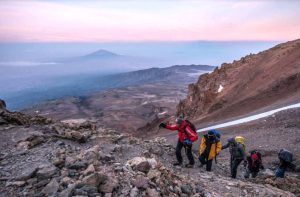The Formation of Serengeti National Park
Serengeti National Park, located in northern Tanzania, is one of the most iconic wildlife destinations in the world. Covering an area of approximately 14,750 square kilometers, the park is renowned for its vast savannah plains, diverse wildlife, and the annual migration of millions of wildebeest and zebra. The formation of Serengeti National Park can be traced back to the early 20th century, and several key milestones played a crucial role in its establishment.
The Origins of Serengeti National Park
The history of Serengeti National Park dates back to 1913 when the German colonial administration established the first game reserve in the area to protect the local wildlife. However, it was not until 1951 that the Serengeti National Park was officially gazetted by the British colonial government. The park was initially established to protect the diverse wildlife populations that inhabited the region, including the famous Big Five – lions, elephants, buffaloes, leopards, and rhinos.
Over the years, Serengeti National Park has gained international recognition for its conservation efforts and rich biodiversity. The park is home to over 500 bird species, 70 mammal species, and countless other flora and fauna. The Serengeti ecosystem is also a UNESCO World Heritage Site, recognized for its outstanding natural beauty and ecological significance.
Key Milestones in Park Establishment
-
Gazetting of Serengeti National Park: In 1951, the British colonial government officially gazetted the Serengeti National Park, marking the formal establishment of the protected area. The park was designated to protect the local wildlife and preserve the unique ecosystem of the Serengeti region.
-
Expansion of the Park: Over the years, the boundaries of Serengeti National Park have been expanded to encompass a larger area and protect more wildlife habitats. In 1959, the Ngorongoro Conservation Area was established adjacent to the park, further enhancing conservation efforts in the region.
-
The Great Migration: One of the defining features of Serengeti National Park is the annual migration of millions of wildebeest and zebra across the plains in search of greener pastures. This natural spectacle has attracted visitors from around the world and has become a symbol of the park’s unique biodiversity.
-
Conservation Success: Serengeti National Park has been successful in conserving its wildlife populations and preserving the natural environment. The park has implemented various conservation initiatives, such as anti-poaching patrols, habitat restoration projects, and community engagement programs.
In conclusion, the formation of Serengeti National Park has been a remarkable journey that highlights the importance of conservation and environmental protection. The park’s rich biodiversity, stunning landscapes, and iconic wildlife make it a must-visit destination for nature lovers and wildlife enthusiasts. To experience the wonders of Serengeti National Park, book a safari tour with Sunset Africa Safari at info@sunsetafricasafari.com and embark on an unforgettable adventure in the heart of Africa.



